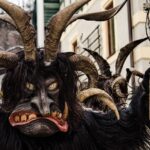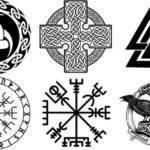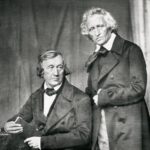
Germany’s history is full of invention, philosophy, and cultural brilliance—but beneath that polished surface lies a strange and eerie past. From bizarre medieval justice systems to mysterious disappearances and unexplained phenomena, Germany has seen its share of bizarre and unsettling events.
While most history books focus on wars and political movements, there are stories lurking in the shadows that are just as fascinating. A dancing plague, a ghost ship, and a medieval trial against animals? These are not works of fiction but real events recorded in history. This article takes you deep into the dark side of German history, exploring the strangest, most unusual, and downright bizarre moments that still baffle historians today.
Strange Events and Bizarre Trials in German History
1. The Dancing Plague of 1518: When Germany Danced Itself to Death
In 1518, the people of Strasbourg (then part of the Holy Roman Empire) were struck by one of the strangest medical mysteries in history—the Dancing Plague. It started with one woman, Frau Troffea, who began dancing uncontrollably in the streets. Within days, dozens of people had joined her, unable to stop their frantic movements.
This involuntary dance marathon lasted for weeks. Some dancers collapsed from exhaustion, others suffered heart attacks or strokes. The local authorities, believing it was caused by “overheated blood,” encouraged more dancing, even hiring musicians to play for the afflicted. Eventually, the mania faded, but the cause of the Dancing Plague remains debated to this day. Was it mass hysteria, poisoning, or a supernatural curse? The mystery remains unsolved.
2. The Trial of a Rooster: Medieval Germany’s Bizarre Justice System

Medieval Germany took justice very seriously—even when it came to animals. In 1474, a rooster was put on trial in the city of Basel for the “crime” of laying an egg. Since it was widely believed that rooster eggs were used in witchcraft, the poor bird was accused of being a servant of the devil.
Despite its best efforts (and silence in court), the rooster was convicted and publicly burned at the stake. While this may seem absurd today, animal trials were surprisingly common in medieval Europe. Dogs, pigs, and even insects were charged, tried, and sentenced for crimes ranging from stealing food to causing accidental deaths.
3. The Mystery of the Mary Celeste of the Baltic Sea

Germany has its own ghost ship legend, known as the Mary Celeste of the Baltic Sea. In 1959, the MV Joyita, a German-built ship, was found drifting in the Baltic Sea, completely abandoned. Its crew had vanished without a trace, leaving behind half-eaten meals, personal belongings, and no signs of struggle.
Despite extensive investigations, no one ever discovered what happened to the crew. Theories range from piracy and mutiny to supernatural forces. The ship was eventually salvaged, but its eerie reputation still lingers.
Eerie Mysteries and Unsolved Cases in German History
1. The Hinterkaifeck Murders: Germany’s Creepiest Unsolved Crime
In 1922, the small Bavarian farmstead of Hinterkaifeck became the scene of one of Germany’s most disturbing unsolved crimes. The entire family of six, including a 7-year-old girl, was brutally murdered with a pickaxe—but the details are what make it terrifying.
- Footsteps were found in the snow leading to the house, but none leading away.
- A newspaper from Munich appeared in the home days before the murders, even though no one had bought it.
- Neighbors reported seeing smoke coming from the chimney AFTER the family was dead—suggesting the killer lived there for days.
Despite investigations and modern forensic analysis, the murderer was never found, and the case remains one of Germany’s greatest true crime mysteries.
2. The Disappearance of Kaspar Hauser
In 1828, a mysterious boy appeared in Nuremberg, barely able to speak and carrying only a letter with his name: Kaspar Hauser. He claimed to have spent his entire childhood locked in a dark cell and knew nothing of the outside world.
Over time, Kaspar became a celebrity in Germany, with many believing he was the rightful heir to the Baden throne, hidden away due to royal intrigue. But just as the mystery deepened, he was stabbed to death by an unknown assailant in 1833.
Was Kaspar Hauser really a lost prince, or was he an imposter? His death only added to the legend, and to this day, no one knows the truth.
3. The Black Forest’s Eerie Disappearances
Germany’s Black Forest is famous for fairy tales, but it also has a reputation for mysterious disappearances. Over the centuries, countless travelers, hunters, and villagers have gone missing without explanation. Local legends claim the forest is home to malevolent spirits, witches, and even time warps.
One of the most chilling cases happened in 1987, when a group of hikers reported seeing a man in old-fashioned clothing walking towards them—only for him to vanish into thin air. Could these stories be echoes of old myths, or is there something truly strange lurking in Germany’s most mysterious woods?
Why These Stories Still Fascinate Us
Germany’s past is filled with strange, unexplained, and eerie events that continue to spark curiosity. Whether it is medieval animal trials, ghost ships, or chilling disappearances, these stories remind us that history is not just battles and rulers—it is also mystery, fear, and the unexplainable.
These bizarre moments offer a glimpse into different eras, beliefs, and superstitions, showing how people once explained the world around them. Even today, some of these mysteries remain unsolved, fueling speculation and legend.
Want to Explore More About Germany’s Mysterious Past?
Discover more chilling stories and historical oddities:







